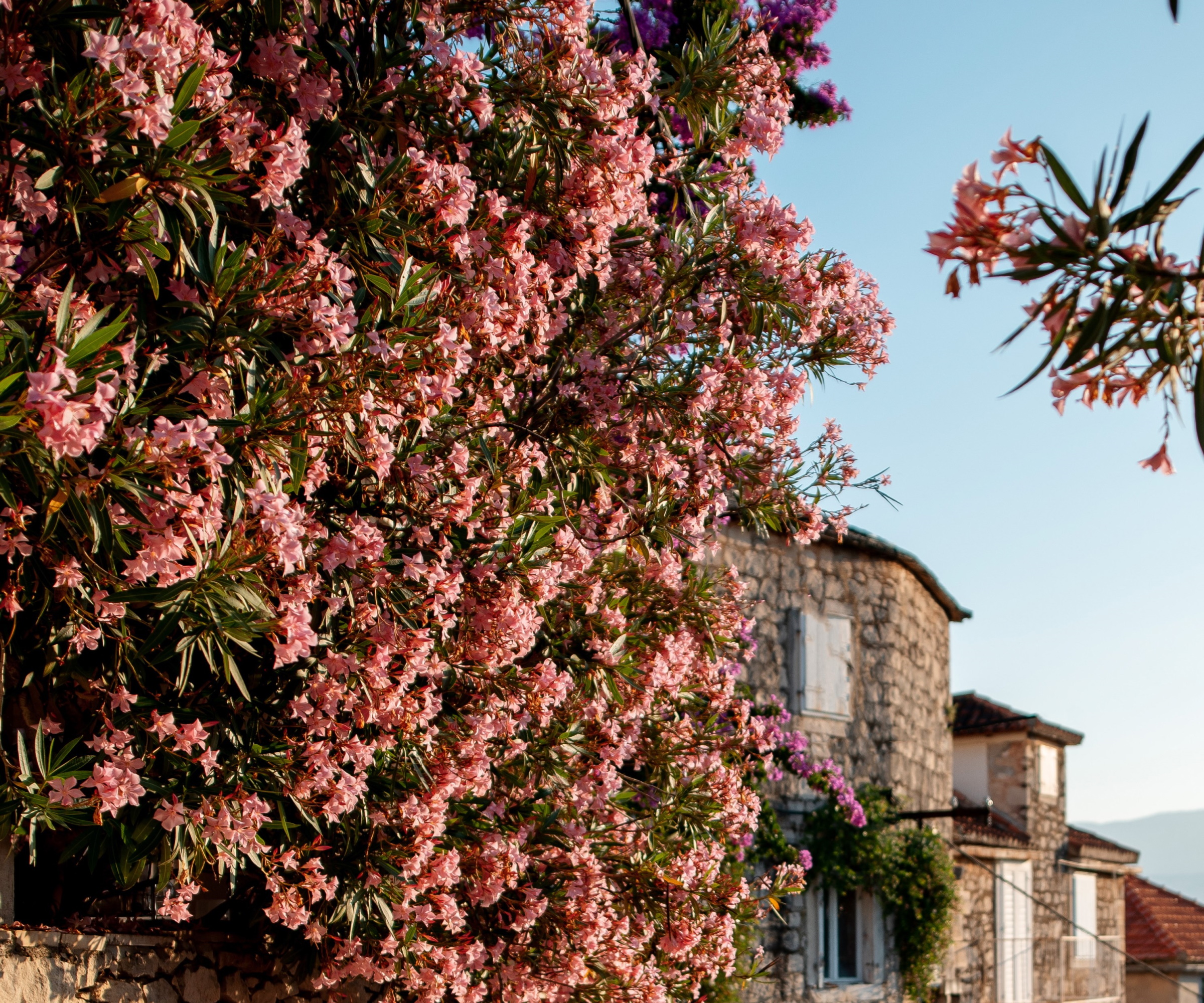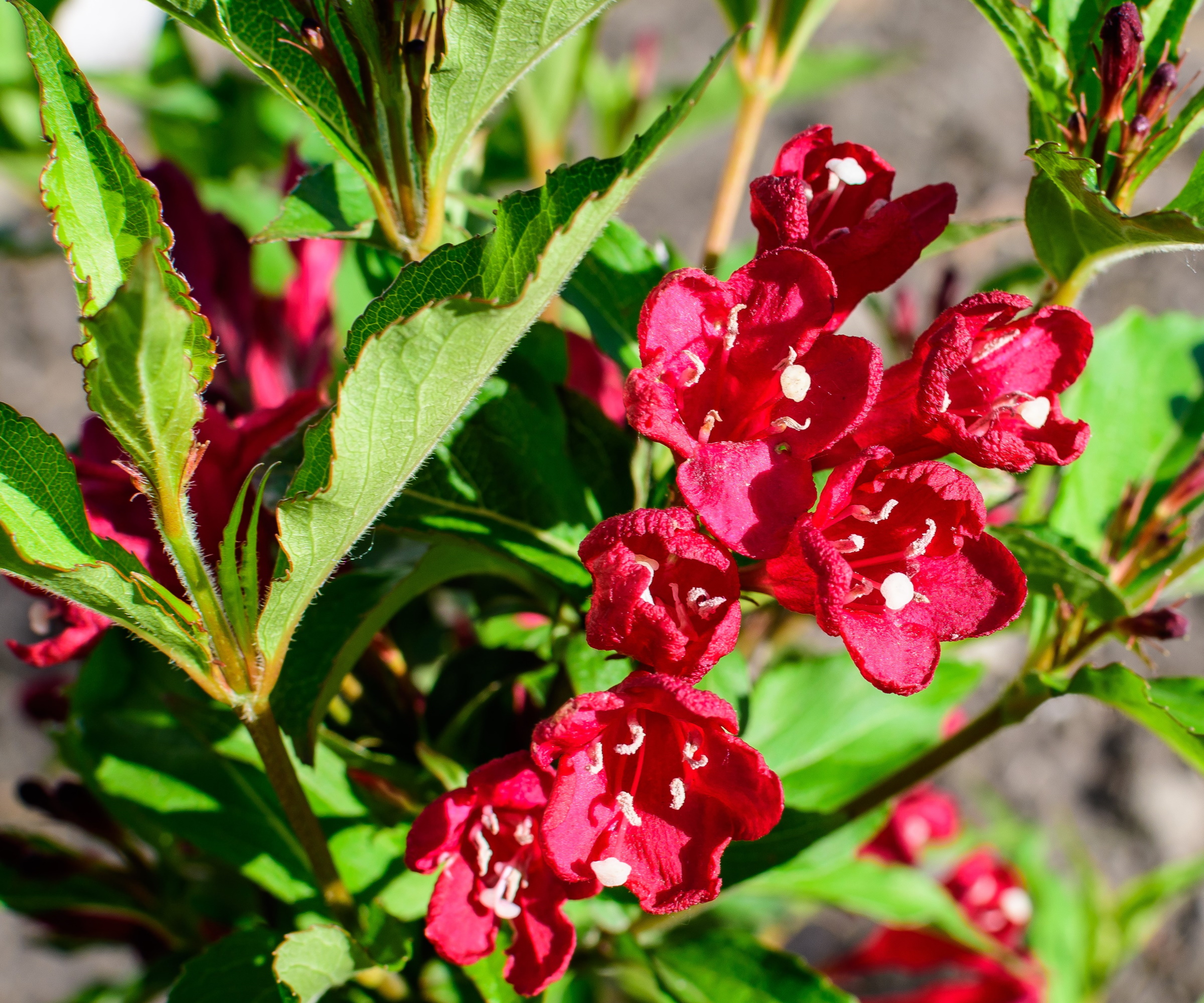How to grow weigela – a colorful shrub that pollinators love
This flowering shrub is both easy to grow and impactful, filling outdoor spaces with masses of colorful blooms from early spring


Weigela is a flowering shrub renowned for its colorful, trumpet-like blooms. Flowering from spring through to summer, Weigela has remained a popular deciduous shrub for gardeners looking for both color and impact in the garden border.
This low-maintenance and fast-growing shrub is a useful addition to any yard, with masses of pink, purple and red flowers supported by lush, green foliage, which is an appealing backdrop through the summer and fall months for other flowering perennials and annuals.
Whilst weigela has undoubted ornamental appeal, it can be grown in pots and is popular with pollinators, attracting bees and butterflies through the spring and summer months, often noted to be humming with insect activity. To add a splash of color to your outdoor space this year, learn how to grow weigela and fill your yard with bright show-stopping blooms.

How to grow weigela
Flowering from spring through to summer, vibrant weigela shrubs will add impact to any outdoor space. Not only are they popular shrubs with gardeners, but pollinators adore the trumpet-like blooms. Read on to discover how best to grow weigela in your yard.
Things to consider before growing weigela

Weigela shrubs will 'grow best in US hardiness zones 4 - 8,' says Natalie Carmolli, garden expert and Public Relations Specialist at Spring Meadow Nursery. Helpfully, these shrubs 'can tolerate a fairly wide range of temperatures,' Natalie continues.
Fortunately for gardeners, weigela shrubs are 'not terribly fussy,' Natalie says. These shrubs are 'pretty adaptable,' tolerating both cooler and warmer zones relatively well. If you are growing in a cooler zone, such as US hardiness zone 4, be sure to plant weigela in a position where it gets as much sunlight as possible. In milder zones, such as US hardiness zone 7, planting in a partial to full-sun position is also preferable.
They 'prefer well-draining soil that is slightly acidic to neutral,' Natalie says, 'with a pH range between 6.0 and 7.0.' If you are unsure about the pH of your soil, consider assessing the soil pH using a device such as this soil pH meter from Walmart.
If, however, you reside in a location with an alkaline soil, do not fret. Weigela 'can happily be grown in a container,' Natalie says. 'Indeed, there are many dwarf cultivars that are perfect for growing in pots.' Whilst weigela are not difficult shrubs to grow, they do not like to have wet feet, 'so make sure your shrub is not planted in a situation where the soil can get waterlogged,' Natalie says.

Natalie is a garden and plant expert, working as a public relations specialist for Spring Meadow Nursery. She is an avid gardener and has a Certificate of Mastery in tree and shrub ID from Longwood Gardens.
Advice on growing weigela

- Soil: Weigela shrubs prefer neutral to slightly acidic soils. If attempting to grow in alkaline or sandy soils, your shrub might struggle, and noticeable signs will include yellowing and wilting leaves. One option is to make the soil more acidic, using a product such as this soil acidifier from Garden Goods Direct, or consider growing in a container, controlling the soil pH as necessary. Whilst weigela can 'adapt to a wide range of soil types, they prefer well-draining soil,' says Alex Kantor, plant expert and Owner at Perfect Plants Nursery. 'It is important to ensure that the soil is not waterlogged, as excessively wet conditions can lead to root rot.'
- Light: Most weigela varieties prefer partial to full sun. These 'shrubs prefer to grow in full sun but can tolerate partial shade,' Alex says. 'Varieties with golden or purple foliage will hold their color better in full sun, whilst those with variegated foliage can be prone to burning with excessive afternoon sun in hotter climates,' Alex continues. It is advisable to 'plant weigela in a location suitable for the variety, but most will require at least six hours of direct sunlight each day.'
- Watering: Water regularly after planting your weigela shrub, checking the soil frequently, especially during dry spells. 'It is important to ensure that the soil is consistently moist but not waterlogged,' Alex says. Once established, most weigela shrubs are self-sufficient and will be able to do just fine without frequent watering. Care should be taken to water the shrub deeply during dry spells or droughts, especially if planting in a container, which will quickly dry out during the warm summer months.
- Fertilizing: In spring, fertilizing weigela can be a good idea. Use a balanced fertilizer diluted in a watering can, or a slow-release fertilizer distributed around the base of the rootball, like this root-boosting slow-release fertilizer from Perfect Plants. Applying a 'layer of organic mulch around the base of the shrub once a year can also help to retain moisture and inhibit weed growth,' Alex says.
- Pruning: 'Weigela pruning should take place in late spring or early summer, right after the blooming season has ended,' Alex continues. 'This timing allows the shrub to produce new buds for the following spring.' When pruning, carefully remove any dead or damaged branches, trimming these stems back to the base of the plant, as well as pruning any leggy stems. To 'encourage fuller growth, you can also selectively trim back some stems by one-third,' Alex says, which will help promote new, bushy growth. Be sure to only prune a limited amount of stems, not more than one-third of the plant, to avoid overstressing the plant which can cause irreparable damage.
- Additional Tips: Weigela shrubs are effective at attracting hummingbirds, and are also popular with butterflies. The planting of one or more weigela shrubs is a good option for those looking to increase biodiversity and pollinator activity in their yard this year.

Alex has worked in the horticultural industry for over 20 years and grew up on the farm since his childhood years. Alex is an expert on landscape trees, shrubs, and indoor plants. He is passionate about growing and helping others learn the trade.

Weigela 'Spilled Wine' is a popular choice for gardeners looking to add a unique and captivating element to their yard. Known for its stunning flowers and foliage, this shrub showcases a spectacular display of color throughout the growing season. Its deep purple leaves create a dramatic backdrop, while its abundant hot pink flowers add a pop of vibrant color.
FAQs
When should I plant weigela?
The best time to plant weigela shrubs is late fall. This allows the plant to settle and the roots to establish over the winter. Spring planting can be successful so long as this is early in the season before temperatures rise. As with any new plant, it is important to water your weigela shrub before and then again after planting in the ground, and subsequently monitoring the watering during the first year.
Weigela shrubs will certainly add color and impact to any outdoor space or backyard, whether grown in the border or planted in a container. Why not consider growing other shrubs with vibrant blooms this year, such as ixora, for a dazzling display of tropical color.
For more information, see our guide on how to take weigela cuttings, to grow your collection this year.
Sign up to the Homes & Gardens newsletter
Design expertise in your inbox – from inspiring decorating ideas and beautiful celebrity homes to practical gardening advice and shopping round-ups.

Thomas is a Content Editor within the Gardens Team at Homes and Gardens. He has worked as a professional gardener for both public spaces and private estates, specializing in productive gardening, growing food and flowers. Trained in Horticulture at the Garden Museum, he has written on gardening and garden history for various publications, including The English Garden, Gardens Illustrated, Hortus, The London Gardener and Bloom. He has co-authored a Lonely Planet travel book, The Tree Atlas, due out in 2024.
-
 5 hydrangea myths debunked by experts – and what you need to know instead for beautiful blooms
5 hydrangea myths debunked by experts – and what you need to know instead for beautiful bloomsFrom ways to change their color to when to prune, there are certain misconceptions to steer clear of when growing these flowering shrubs
By Holly Crossley Published
-
 How the 'ODT' method can help you to tackle your overwhelming decluttering checklist – and streamline the process from start to finish
How the 'ODT' method can help you to tackle your overwhelming decluttering checklist – and streamline the process from start to finishAvoid 'analysis paralysis' and tick off tasks quickly and easily by making just one decision at a time
By Ottilie Blackhall Published